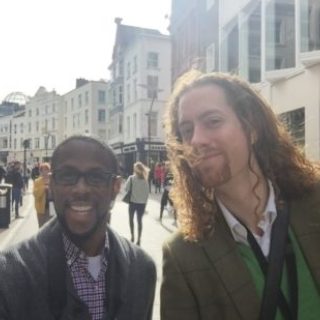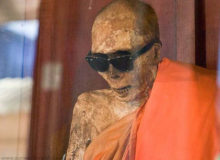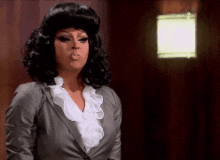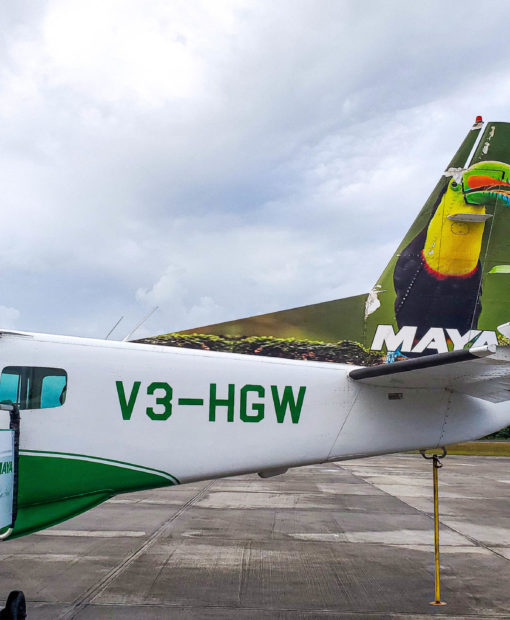Dr. Jamil and Twin Doctors TV visit Ireland after Dr. Jamil and Dr. Idries learned that they are 10% Irish. Part genealogy tour, part exploration of a tiny island nation with a rich and at times unusual medical history; Ireland, here The Twin Doctors come!! So look out as the Black Irish explore Dublin!!!
Look out Dublin, here come the black Irish!!! There is an old Irish saying; or should I say that there is an “ole” Irish saying, and it goes something like this my lil’ lads and lassies. “If you’re lucky enough to be Irish, well then you’re lucky enough”. Sweet, simple and to the point, this old Irish maxim encapsulates everything that is the Irish and every thing that is Ireland. You see the Irish would rather be nothing but Irish; and the Irish would rather be nowhere but in Ireland. After all, what better place to be than a small island nation of 6.5 million people that is quietly nestled in the north Atlantic? What better place to be than a country renown for it’s legendary hospitality, it’s robust and beautiful natural scenery and it’s Guinness drenched nightly life? Visit Ireland, and you’ll find that you too want to be nowhere else but in Ireland. Visit Ireland, and you too will find that you wish, if only just a little bit, deep down inside, that you too were Irish. But, while we can’t all be Irish, we can all at least spend some time in Ireland. And while there, we can all feel just a little bit Irish if only for a brief moment or two. But while we…., no correction, but while YOU all are not lucky enough to be Irish, it turns out that Idries and I are. Boom, in your face!!! Now I know what you are thinking and I can see the skepticism in your eyes as you ask the question, “you two are Irish? Well then if you two are Irish where are your freckles? Where is your ginger hair? And my oh my, isn’t that’s one hell of a tan you two Irish ‘brothers” have?” Well, let me start be saying that I understand your skepticism, I mean, I really do. And I will be the first one to grant you that our “tans”, while pretty awesome if I do say so myself, are in fact permanent ones. And I will also not quibble with the fact that Idries and I don’t have those signature Irish freckles or that trademark ginger Irish hair. Nonetheless (and I’m saying this with my best righteously indignant voice), I feel that it is a bit, oh I don’t know, shall I say, a bit presumptuous of you to assume that Idries and I don’t have those trademark Irish freckles. After all, how do you know that those lovely little Gaelic freckles aren’t just hiding behind our awesome Irish tans? But alas my friends, you are in fact correct. We are freckle-less. But freckles or no freckles, Idries and I are still in fact Irish. Or at least, we are sort of Irish.
After Idries and I were featured in a recent Ancestry.com commercial, we were each given free Ancestry DNA analysis kits. Given that he and I are twins, Ancestry really could have just given one of us a DNA kit. After a few rounds of “Odds and Evens”, or maybe after a few “Rock, Paper, Scissors” battles, we could have decided which one of us actually got to take the test. But Ancestry of course is a top flight operation, and money is clearly no object to them. So, they provided each of us with an individual kit. And each of our genetics analysis’ showed that low and behold, Idries and I are in fact 10% Irish. Not entirely surprising in hindsight given than our maternal Grandfather’s name was Harvey Collins. But still a little bit surprising I have to admit given that while his surname was Collins, his Irish “tan” was even darker the Irish “tans” that Idries and I have. So, making the connection between “Harvey Collins” and “Ireland” was not an obvious one by any means. Ultimately though, confirming that Idries and I are 10% Irish, while a little bit surprising, was also VERY VERY cool! And so, as part of our “Heritage Tour” over the next year or so, Idries and I will be visiting each of the countries that our Ancestry DNA analyses showed that our ancestors came from. First stop on the tour, Ireland!! And so while not all of YOU are lucky enough to be Irish, it turns out that I am. So in “yer” face!!!! And as I make my way back to one of my ancestral homelands to be among my people, I am reminded of another famous old….no excuse me, forgive me, I’m Irish, so let me try this again. I am reminded of another famous “ole” Irish saying that goes a “lil” something like this. “There are only two kinds of people in the world, the Irish and those who wish they were”. Next stop Dublin……..
Located along the country’s east coast, at the mouth of the River Liffey sits Dublin, Ireland’s capital city of close to 1.3 million people. Designated a “Global City” by the Globalization and World Cities Research Network, Dublin, a bustling metropolis, is the embodiment of a weird and wonderful contradiction. On the one hand, Dublin is a socioeconomic world powerhouse that has earned the coveted “Global City” designation. A designation given to fewer than 50 cities worldwide. It’s a designation given to cities that have been deemed to have a “direct and tangible effect” on world socioeconomic affairs. Yet, in-spite of this designation, and in-spite of the undeniable civic pride that comes along with such a lofty designation; Dublin maintains an inviting, cozy, friendly small town vibe. The type of vibe that is comfortable; comfortable like an old, warm and fuzzy, if not slightly worn sweat shirt. The type of sweat shirt that you’ve had for far too long, but can’t bear the thought of parting with. In fact, immediately upon arriving in Dublin, even if it is your first time in the city, you feel as if you’re arriving in a city that you’ve been to before. You feel as if you are among old friends, as if you are home. So while the Globalization and World Cities Research Network may call Dublin a “Global City”, and while Ireland’s economy, once famously dubbed the “Celtic Tiger” may be starting to hum again, I just call Dublin “The World’s Smallest Big City”. “Big Little Dublin”, “B Dub” for short.

Man In Irish Pub
As both a Travel Blogger and as a Medical Doctor, I’m always curious to know what the leading causes of death are in a country that I will be visiting. I know that that may sound a bit morbid and dark to some people, and a strange way to view a future travel destination to others. But the reality is that death is as much a part of life as anything, and travel is after all a robust and full throated celebration of life. A celebration of life, and all that comes along with life. Plus, over time, I’ve come to realize that you can learn a lot about how a nation of people live, if you first know how they are most likely to die. And so a quick pre-departure review of Irish medical literature revealed to me that the leading causes of death in Ireland are heart disease/ heart attack, lung cancer and Chronic Obstructive Pulmonary Disease (COPD). Ah ha, so the Irish must like to eat well. Often times eating rich, hearty, filling foods that taste good but that may not always be so good for them. Check. And the Irish also must like to drink a little bit, as evidenced by their love of Guinness, Beamish, Murphy’s and Irish coffee. Check. And the Irish probably smoke a little too much and exercise a little too little. Check and check. Though to be fair, while many of these vices maybe prevalent in Ireland, the reality is that these same vices are prevalent in many, if not in most western countries. Plus, recent population studies have actually shown that the Irish are drinking quite a bit less alcohol than they once did. These same studies have also shown that the Irish are exercising a lot more than they once did. And, wide sweeping legislation has largely banned smoking in public buildings in the country as well. So smoking related illness and deaths will likely be on the decline in Ireland as well. But, since some of these inconvenient facts just don’t fit neatly into my narrative of the fun loving, hard living Irish Lads and Lassies, we will just conveniently bury them for the time being. Unfortunately, one thing that a trip to Ireland teaches you is, not everything that should remain buried always does. That’s right friends, did you know that the dead frequently once rose in Dublin? It’s true, but we will talk more about that later.
Getting There
After completing a 24-hour shift at my “day job”, or more appropriately should I say, after completing a 24-hour shift at my “day and night job”, I finally got home Wednesday morning feeling understandably exhausted but undeniably excited. The mantra of this travel blogging full time Doctor played over and over again in his head like a broken record. “I’ll sleep when I’m dead and I’ll live while I’m alive, I’ll sleep when I’m dead and I’ll live while I’m alive”. And so, driving home from the hospital, after checking my pulse and confirming that I was still in fact alive, I reached deep down and I dug up some newly found and much needed vigor and vitality. Then after reaching home and parking my car, I entered the back door of my house, tossed my white coat to the side, peeled off my well worn scrubs and hit the treadmill for a brief run. I then took a quick shower, packed my “Amazing Blue Bag” and then made my way to Chicago O-Hare International Airport. My “Amazing Blue Bag” is called my “Amazing Blue Bag” because I used it during Idries and my brief stint on CBS’ The Amazing Race. He, that’s right, my bag is a he; he is the subject of a soon to be released blog aptly named “Redemption and My Amazing Little Blue Bag”, so when the blog is released show him some love.
Our flight to Dublin took a fairly typical northeasterly route over Michigan, Northeast Canada including Newfoundland and then the North Atlantic Ocean before finally making landfall over Ireland. With some favorable Westerly winds at our tail, a flight that normally averages 7 or so hours was completed in just 6 hours and 25 minutes. This put us wheels down in Dublin at 6:48AM local time. After taxiing for a few minutes from the runway to the arrivals terminal, we found ourselves holding short of the gate. I think that our early arrival caught the airport ground staff by surprise, and they weren’t quite ready to accommodate our aircraft. After a 10 minute or so wait, the plane was then gated and we were allowed to deplane. After deplaning I headed towards Immigration and Customs. Immigration and Customs in Dublin was an absolute pleasure. Rarely do people use the words “Customs” or “Immigration” and “pleasure” together in the same sentence, but in this case, doing so is absolutely appropriate. The lines, if you could call them that, moved extremely quickly; and the Immigration Agents were probably some of the most welcoming and friendly Customs Agents I have ever encountered anywhere in the world. They actually provided an efficient service both with cheer and with a smile. After clearing Customs, and within just 15 minutes of having gotten off of the plane in Dublin, I was curbside and hailing a cab on a brisk Irish morning.
Hello Dublin
My taxi ride from the airport to The Grand Canal Hotel in Dublin’s Ballsbridge neighborhood took about 30 minutes. The early morning traffic was fairly light, and my cab ride being so quick only cost me 30 Euros (about $40). I arrived at the hotel to find however that my room was not yet ready. The hotel staff however was kind enough to take pity upon me, and they agreed to store my luggage in a safe location before then directing me to the hotel’s dining area where a hot breakfast buffet was being served. My initial impression was that the hotel’s restaurant was clean and well maintained, the staff was courteous and prompt, and both the breakfast buffet’s food selection and quality was good. But, while the overall food quality at the buffet was good, it was not the buffet as a whole that I was almost immediately taken with. No my friends, while at breakfast there was one thing that at first had me smitten. But the feeling of being smitten then quickly matured, progressing to a feeling of affection, then followed by a feeling of love, then by a feeling of obsession. The object of my affection, of my love, of my obsession on this fine Irish morning was brown, and boy oh boy did she ever cut a thin figure. In fact, she cut too thin of a figure for my liking. Too thin because the more of her I saw, the more of her I had to have. And the more of her I had, the more of her I wanted!! And the bigger she was, the more of her there was. And the more of her there was, the better as far as I was concerned!!! This thin, brown Irish object of my affection, of my love and of my obsession was soft, she was warm and when you put butter on her…..oh my God did she ever just melted in your mouth!!! What is her name you may be asking me my friends? Well her name, her name is “Irish Soda Bread”!!! And as I enjoyed this local treat for the first time, I felt a pep developing in my formerly jet lagged step. And I was left to wonder where Irish Soda bread had been my entire life? Why had no one told me of her? And how I had gotten through 39 years, 39 Y-E-A-R-S of what I previously thought of as “living”, though I wasn’t even sure that I could call what I was previously doing without her in my life “living” anymore, without her? And more importantly, now knowing her, now having tasted her with butter and with jam and with orange marmalade and with honey; now having enjoyed her with cold milk and with hot coffee and even with orange juice, how could I ever go back to life without her? When my time in the magical land of the Irish Soda Bread People came to an end, how could I live another 50, 60 or even 70 years without her? These thoughts, these obsessions, these burgeoning compulsions, compulsions of the sort that can ruin a man, made me realize that I had problems…..big boy problems. The kind of problems that only Irish Soda Bread could solve them.
Not long after breakfast my room was ready, and so with my belly full I made my way up to the hotel’s “executive floor” and to room 512. I think that the 5th and 6th floors of the hotel are termed the “executive floors” simply because they are the top two floors of the hotel. Being the top floors, they are furthest away from the street level and from the noise that comes along with proximity to the street. After reaching my room, and with a few hours to spare before my scheduled private walking tour of the city with renowned Dublin Historian and Tour Guide Garvan Rushe, I decided to take a short 90 minute nap. After a long international flight, I typically try to keep my arrival’s day naps between 90 and 120 minutes. Napping for 90 to 120 minutes after a long international flight allows your body enough time to complete one full sleep cycle (i.e. to have a period of both non-REM and REM sleep). This helps you to awaken feeling well rested and fresher from both a cognitive and a physical standpoint. Sleeping for longer than 120 minutes however can be detrimental to the newly arrived international traveler. While it is true enough that sleeping for longer than 120 minutes may allow the newly minted international traveler’s body the opportunity to complete multiple full sleep cycles, something that on it’s face seems like a good thing, the reality is that sleeping for longer than 120 minutes following a long international flight can actually disrupt your already confused circadian rhythms. This can ultimately make it harder for your brain and your body to adjust to your new time zone. So keeping arrivals day naps to between 90 and 120 minutes is optimal.
After a brief but refreshing 90 minute nap, I arose to find that my first afternoon in Ireland would be a sunny and fairly warm one. Once out of bed, I rinsed off my face, brushed my teeth, put on my clothes and made my way to my prearranged meeting spot with Garven. We were set to meet in front of a book store along Dublin’s very centrally located O’ Connell Street. O’ Connell Street was named after Daniel O’ Connell, a man who Garven would later tell me was like “Ireland’s Martin Luther King”. I found that analogy to be somewhat unusual given that Garven also told me that future fighters for freedom and justice like Martin Luther King and Ghandi studied the teachings and tactics employed by O’ Connell during Ireland’s fight against 19th century British occupation. So comparing O’ Connell to someone like King who came along after him, and who actually studied his tactics to help shape his own strategies seemed a bit unusual to me, but nonetheless, I got the point.
While waiting for Garvan I grabbed a quick coffee at the book store that we would be meeting in front of. As I drunk my coffee, I enjoyed some good ole fashion people watching on a sunny Dublin Thursday afternoon. In no time at all though, Garven soon appeared. Having known ahead of time what Garven looked like, he wasn’t that hard for me to spot. I don’t think though that had I not known what he looked like that he would have been any more difficult to spot. He was after all the 6 foot 5 inch guy with the bright red curly hair that was towering over the rest of the crowd. And as he approached, with each long and confident stride, he looked like something straight out of an old Highlanders episode. Now I know that the Highlanders were of course Scottish, but you get my drift.
O’Connell Street
Garven looked like something straight out of central casting. And after the customary “how do you dos” and a friendly handshake, he and I headed off down O’ Connell Street to explore Dublin. Our first stop on the tour was to be the statue of the street’s name sake, Daniel O’ Connell. As we reached Mr. O’ Connell, we found him at the top of a pedestal. His left hand was over his heart, he certainly cut a very confident and patriotic figure. Below and in front of Mr. O’ Connell stood the “Maid of Erin”, a women who is said to metaphorically represent the country of Ireland. Standing there she points upwards towards her liberator, Mr. O’ Connell. Below and behind O’ Connell, with his back symbolically turned towards the people is their oppressor, the King of England. As Garven and I stood admiring the statue, Garven was quick to point out the fact that the bullet holes that haphazardly tattoo poor old Daniel O’ Connell’s chest were not an intended part of the monument. Rather, they were the result of gun fire that erupted in 1916 along O’ Connell Street during one of many failed Irish rebellions against British rule. Ultimately, it would not be until the year 1922 that the Irish were finally able to pry themselves from the clutches of English control.
Before leaving O’ Connoll Street, Garven took a brief moment to point out the “Spire of Dublin”. The Spire, alternatively referred to as Dublin’s “Monument of Light” is a large stainless steel conical structure that is almost 400 feet tall. Both the base of the spire as well as the top 39 feet of the spire are illuminated after dusk, creating an intense beacon of light that projects from the top of the spire high into Dublin’s night time sky. According to Garven, after dark, this beacon of light is visible from most places in Dublin.
Trinity College – Hello Freshers
From O’ Connoll Street we next made our way to the campus of Trinity College. Anytime you explore Dublin, you have to visit Trinity College. Trinity College, Ireland’s oldest university was founded in 1592 by Queen Elizabeth the First. The campus of Trinity College is legendary for its ornate old buildings, its meticulously maintained green lawns and of course for its rich history. Trinity College in fact is home to The Library of Trinity College. The library of Trinity College is the largest library in Ireland. It opened in 1952, the same year that the university first opened it’s doors. The library houses some of the oldest books in Ireland including the world famous Book of Kells. The Book of Kells, written in Latin, contains the four gospels of the Bible’s New Testament. Two of the four volumes of the Book of Kells are on display at the library. The Library at Trinity College also has a large chamber referred to as The Long Room. The Long Room was built between 1712 and 1732 and it houses many old and historically significant Irish literary works. When open, The Long Room may be toured, but it’s books may not be handled by the public. Trinity College, with its beautiful architecture, it’s perfectly maintained campus grounds and its extremely rich literary, scientific and cultural history is a must see for anyone visiting Dublin.
It turned out that the day that Garven and I visited the college was an especially eventful one, as it was the fourth day of the school’s new student orientation week. And so upon our arrival to the school’s campus we found the grounds to be filled not only with mature well maintained trees, trees that had likely occupied the grounds for decades and decades; but we also arrived to find the grounds full of immature (in terms of age not necessarily demeanor) slack jawed baby faced “Freshers”. Freshers is a colloquial term used in Ireland to refer to first year university students. As part of the new student orientation activities organized by the school, Front Square, the campus’ central court yard, was bustling with new students and their family members, faculty and many returning students. All people present were participating in one form or another in the Freshers introductory activities. There was definitely a unique energy permeating the air of the historic campus on the day of my visit, and as Garven and I made our way through the crush of people, I couldn’t help but to by osmosis soak up a little bit of the nervous optimism that filled the air. This nervous optimism inherited by way of osmosis did quickly pass though as this slightly jet-lagged middle aged “Not-So-Fresher” carried on with his day. But for a minute there I felt like a youngster again.
From Trinity College Garven and I next made our way up Kildare Street towards St. Stephen’s Green. Before reaching St. Stephens Green however, we walked past Number 6 Kildare and The Royal College of Physicians of Ireland. Standing outside of The Royal College, Garven informed me that many locals believe that one or more of the great French General Napoleon Bonaparte’s teeth are housed within the building. When I inquired, likely with a small hint of doubt in my voice, as to why the great French General’s teeth would be housed in Dublin, a very broad, very proud Irish smile broke out across Garven’s sun splashed alabaster face. It was one of those “well I’m glad you asked me that” sort of smiles. Sweeping his red curly hair away from his face, Garven told me that Napoleon’s personal Physician was in fact Irish. Garven did not know the Doctor’s name, but he confidently recalled how the Irishman, while caring for Napoleon, removed some of his teeth in an effort to treat a dental infection. Having kept the teeth, Garven said that he then later displayed them in Dublin for some time before they were ultimately procured by and housed with the Heritage Center at the Royal College of Physicians of Ireland. Listening to Garven, I kind of had my doubts as the story seemed to have quite a few holes in it. But what science loving, history loving, travel blogging medical doctor worth his salt could pass up an opportunity to at least investigate this seemingly tall tale? Not this one I tell ya, not this one. And so I made a mental note of the address “Number 6 Kildare” and I decided that before leaving Dublin, I would go back to the Heritage Center of The Royal College of Physicians of Ireland in search of Napoleon’s teeth.
St. Stephen’s Green
After our brief stop in front of The Royal College of Physicians of Ireland’s Heritage Center, Garven and I made our way over to St. Stephen’s Green. St. Stephen’s Green at 22 acres in size is one of Dublin’s largest “Garden Square” parks. When originally developed, St. Stephen’s Green was surrounded by large Georgian style homes that were occupied by Dublin’s rich and largely Protestant elite. During this time, St. Stephen’s Green served as a private refuge for the elite who’s homes surrounded it. Giving them a place to go to escape the noise, grit and crowds of the city. However in 1877, by an act of parliament and at the behest of Sir A.E. Guinness, a member of Ireland’s beloved Guinness brewing family, St. Stephen’s Green was opened to the public and all who want to explore Dublin.
Three years later, in 1880, A.E. Guinness paid for the layout of the park to be updated, making it even more accessible for all Dubliners. The park still largely retains Guinness’ updated design, and in a show of appreciation for his efforts the city government of Dublin commissioned a statue bearing his likeness that was erected in St. Stephen’s Green. Modern day St. Stephen’s Green is teeming with people, ponds, vegetation and urban birds of every ilk. The air around the park is clean and the grass is filled with people reading, writing, painting, playing and napping; a true testament to A.E. Guinness, his gift to the people and his vision for the park.
Dublin Castle
After meandering around St. Stephen’s Green for a while, Garven and I made the 5 minute or so walk over to the historic Dublin Castle. Dublin Castle was originally built in 1230 and for many years it served as the seat of English governance in Ireland. In fact, it wasn’t until the year 1922 that Ireland finally gained its independence from England after the signing of the Anglo-Irish Treaty in 1921. It was after this treaty was signed that a newly formed provisional government led by revolutionary politician Michael Collins took control of the country, effectively returning the governing responsibilities of Ireland back to the Irish people. But before the Anglo-Irish Treaty of 1921 was signed, England ruled Ireland, doing so with an iron fist largely from the Dublin Castle. As a result, when agents of the British government needed to dole out “justice” to “trouble making”, revolution seeking, Irish men and women, this “justice” was frequently doled out at Dublin Castle. In fact a walk around the grounds of the castle, which today houses a number of Irish governmental agencies, reveals walls with defects and crevices in them that were created by English soldiers who would stand guard at the gates of the castle and sharpen their swords on the castle walls. These defects in the castle walls still today serve as a visible reminder of Britain’s long, and at times ruthless rule over Ireland and the Irish people.
Grafton Street
After spending time at Dublin Castle, Garven and I next walked up and down Dublin’s famous Grafton Street. Grafton Street is a wide, vibrant cobblestoned street that is teeming with tourists, street performers and stores housing some of the world’s largest and most exclusive merchandising brands. So if you want to go to Ireland to buy expensive brand named stuff that you could buy in any other big city anywhere in the world, and if you want to pay a premium to buy that very homogenous “cool” stuff, then go to Grafton Street to do your shopping. What you are buying there may not be quintessentially Irish, but at least you can say that you bought whatever it is that you do buy there in Ireland. But be warned though, I suspect that the motto of the exclusive merchandising brand operators up and down Grafton Street is “Why pay less at home when you can pay more here”?
If on the other hand you want to people watch while being where some of Dublin’s best action is, then Grafton Street, though maybe not it’s larger homogenous international stores, is the place for you. If you like street performers, many of whom are really quite entertaining, and if you like street artists’, many of whom are really quite talented, then Grafton Street is also for you. And if you like to eat, and if you find yourself thoroughly excited when you have a plethora of good restaurant options offering food from every corner of the globe to chose from, then again Grafton Street is for you. But just don’t go to Grafton Street for the large chain store operators. You can get that brand named bag or that fruity computer once you get back home for a lot less.
Many of you will never guess who I found tucked away in a little corner off of Grafton Street. In a little corner off of Grafton street I found Philip Lynott, the former lead singer of the band Thin Lizzy and a Dublin native. Well, I didn’t actually find “THE” Philip Lynott as “THE” Philip Lynott has been dead for close to 30 years. But I did find a handsome lifelike bronzed statue of the crooner of such hits as “Whiskey in the Jar” and “The Boys Are Back in Town”. Even if you don’t know Philip’s name, and even if you don’t know much about his music, I know that you know “The Boys Are Back in Town”. With that famous chorus “The boys are back town, the boys are back in town, the boys are back in town…….. the boys are back in townnnnnn”, the song was a global hit!
Philip, who was born in Dublin in 1949 was the product of a mixed marriage. His Mother was a white Irish women and his Father was a black man from British Guiana. As a result of being mixed raced, Philip was darker than most of the Irish children that he grew up with in what was then a very homogenous Ireland. As a result, both as a child and later as a young man, Philip was famous for his “wild” curly hair. He was also famous locally for his claim that he was “as Irish” as the VERY Irish Guinness beer. He often justified this statement by simply saying that both he and Guinness beer were “smooth and dark Dublin originals loved by all”. It would seem that he was pretty much right on the mark with that statement. Having been a pretty mean guitar player in his day, visitors to his monument off of Grafton Street still pay homage to their fallen “smooth and dark Irish original” by placing colorful guitar picks along the fret board of the guitar that his likeness holds in his right hand.
After our brief visit with the smooth dark Irish original Mr. Lynott, an Irish brother who had an awesome tan like two newly minted Irish OB/Gyn Doctors you may know, Garven and I made our way to Murphy’s. Murphy’s is a little ice cream shop located right off of Grafton Street. Garven recommended Murphy’s because he said that the Ice cream there was like nothing else you will find outside of Ireland. Well friends, I consider myself to be a bit of an ice cream connoisseur. I eat ice cream. I like ice cream, no in fact I love ice cream; and I have no patience for ice cream that is ANYTHING other than absolutely delicious!!! So I set the bar high when it comes to ice cream people, very high!!! And I considered Garven’s words to be a challenge!!! A challenge I willingly accepted. Well people let me tell you that Murphy’s ice cream was absolutely delicious!!! It not only met my high bar, it surpassed it. As Garven explained it to me, Murphy’s uses genuine farm fresh Irish cream to make its ice cream. They then add just a little bit of the accentuating flavor that’s to be infused into each of it’s different kinds of ice cream. So while you can taste and really enjoy this accentuating flavor, this accentuating flavor does not overwhelm the taste of the fresh cream used to make the ice cream. The result is an ice cream that is soft, subtle and tasty, but by no means overly sweet. With the taste of the cream not being overwhelmed by the accentuating flavor, using the name Ice CREAM to describe this tasty little frozen delight is absolutely apropos, and with one spoonful I was hooked. I think that’s why the little she-devil at Murphy’s, I’m sorry, I meant to say “I think that’s why the nice little female purveyor of frozen treats behind the counter at Murphy’s” let me taste as many samples of their ice cream as I wanted to. Yeah, she knew what she was doing; and I have no doubt that she’s done it before. She was clearly a pro, and as she saw her next mark clumsily walking into her store with the tall alabaster Irish redhead straight out of central casting leading him to the slaughter, she set upon me like a predator stalking its prey. Drawing me in with her “free samples”, knowing that just one taste alone of Murphy’s soft, subtle, sweet ice CREAM was enough, and that offering multiple free tastes of that creamy delight was like mounting an all out assault that could not be thwarted despite my best efforts. In all fairness to this she-devil though, if her generosity was in fact an all out assault, and if her actions truly did represent a predator drawing in its prey, then I was a willing victim. So to that cunning little temptress, my ice CREAM riddled taste buds simply say “thank you” and “may I please have another”?
After ice cream I thanked Garven for the expert guidance he provided while helping me to explore Dublin on foot, and with a simple handshake we parted ways. I then hailed a cab and headed back to The Grand Canal Hotel to freshen up. My plans for the evening included dinner and a night of traditional Irish singing and dancing at The Arlington Hotel. As an aside, catching a taxi in Dublin was never an issue my entire stay there. The city of Dublin, with its population of 1.5 million people has over 12,000 licensed taxis. By comparison the city of New York, with its population of 8.5 million people has a little over 13,500 taxies. So as you can see, taxis in Dublin are plentiful, no one is avoiding you because of your skin color and the prices are quite reasonable.
Celtic Nights – The Arlington Hotel
I was scheduled to be seated for “Celtic Nights”, a traditional Irish dinner, song and dance show at The Arlington Hotel at 7:30PM. Not wanting to be late however, I arrived at The Arlington by taxi about 10 minutes before I was actually scheduled to be seated. The gentleman working the front door at The Arlington nevertheless admitted me, and the hostess seating patrons seated me almost immediately. Not long after being seated the meal presentation was begun. A number of meal options were on offer, and I elected to start my first course with a creamy tomato soup that was served with……..you guessed it, a side of IRISH SODA BREAD!!! “Hello again my brown little lovely” I thought to myself as I saw the waiter bringing my Soda Bread over to me. “I’ve missed you so, it’s been WAAAYYY too long since we last spent time together. We’ve got so much catching up to do, so much to talk about” the conversation in my mind continued. But then I snapped out of my addle brained, sleep deprived romantic stupor, and I realized that Irish Soda Bread, no matter how much I loved her, couldn’t talk to me. And even if she could talk to me, would she talk to me I wondered? Probably not given that the look in my eyes would undoubtedly have betrayed me, and she would have known what I was going to do to her anyway. And so since she was unable or maybe unwilling, I’m not sure which, to keep up her end of our conversation……I just ate her!!! I’m sorry, I know that that sounds harsh, but that’s the life of a piece of Irish Soda Bread on Dr. J’s plate. Here one minute and gone the next.
For the second course of my dinner I selected grilled chicken breast served over warmed mashed potatoes with a side of lightly seasoned mixed vegetables. The food at The Arlington Hotel’s Knightsbridge Bar all in all was pretty good, but I wasn’t really at The Arlington for the fine dining. While the dinner was certainly a plus, I was at the hotel’s Knightsbridge Bar for the show “Celtic Nights”. Celtic Nights is a dinner show that features traditional Irish/Celtic song and dance, and it has been running almost nightly at The Arlington Hotel for 18 consecutive years. The dancers in Celtic Nights are from Celtic Rhythm, one of Ireland’s most successful traditional dance troops. The music in Celtic Nights is performed by Puca, one of Irelands most entertaining, enthusiastic and energetic traditional singer/story teller groups.
After completing my dinner at 8PM, almost as if the performers were waiting for me to give them my undivided attention, the show promptly began. And this show did not disappoint!! Puca featured a violin player, a fiddle player, a guitar player and a Bodhran player. The Bodhran is a traditional Irish drum, and when the instrument’s goatskin is struck just right, it produces a deep, reverberating, penetrating bass that really makes you want to get up and move…….and so move I did!!!
After I got done doing my thing on stage with the dancers from Celtic Rhythm, Puca’s Bodhran player launched into a soul stirring percussion solo. This moved the band’s guitar player to joke that “people say that hip hop began in the early 1980’s in New York City, but we’d like to say that we’ve had hip hop here in Ireland now for hundreds of years”. This declaration was immediately met with a roaring round of applause from members of the audience as they gesticulated and gyrated with approval. While I wouldn’t go so far as to say that traditional Irish song and dance are akin to Hip Hop, I will say that the Irish know how to put on a show. And when the Bodhran player strikes his traditional drum just right, you will find the little DJ in your head saying “let the beat drop”. After two hours of song, dance and revelry, Celtic Nights reached its conclusion. Once the show had finished, I made my way back out onto the streets of Dublin. On the streets of Dublin, I found that the party was just getting started for many folks. I on the other hand, having completed a full day and a full night of “doing Dublin” on very little sleep, was simply spent. And so with a belly full of good food and with a song in my heart, I made my way, bleary eyed but still standing, back to The Grand Canal Hotel. And as I crawled into my bed, thoughts of tomorrow and of what the day might bring kept me company until I was finally whisked away by the Sandman.

 June 15, 2017
June 15, 2017

































 May 19, 2018
May 19, 2018 





